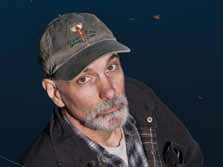“These new minimally invasive surgical procedures have been the greatest advancements in sinus treatment in my more than 25 years of practice, resulting in faster recoveries for our patients.”

 Julie Spinney battled three to five severe sinus infections each year. The 39-year-old Piscataway resident could count on coming home sick every time she flew or went on vacation. And fall allergies always triggered an infection.
Julie Spinney battled three to five severe sinus infections each year. The 39-year-old Piscataway resident could count on coming home sick every time she flew or went on vacation. And fall allergies always triggered an infection.
Hillsborough resident Don DiBlasio, 51, also suffered from sinus issues. Every day, DiBlasio struggled to breathe through his nose. Sinus problems also affected his sleep, so working all day on his feet as a mechanic was exhausting. And when a cold or flu hit, his symptoms, like facial pressure and nasal congestion, were unbearable.
“These are just two examples of the millions of Americans who suffer from sinusitis — inflammation and infection of the sinuses,” says Amy Lazar, MD, chief of otolaryngology at Somerset Medical Center. Many of these sufferers experience symptoms on a regular basis. Thankfully, the Minimally Invasive Sinus Surgery Program at Somerset Medical Center offers options for relief.
Sinus Surgeries to the rescue
“When medications fail to work, there are many surgical options that offer a solution to chronic sinus problems,” explains David Bortniker, MD, otolaryngologist at Somerset Medical Center.
One such option is balloon sinuplasty, a minimally invasive sinus surgery during which a tiny balloon is inflated in the sinus cavity to permanently widen and restructure the sinus passages, providing immediate relief. Dr. Bortniker notes that balloon sinuplasty can be performed without general anesthesia or surgical packing. Patients can resume normal activities within minutes of the procedure.
Functional endoscopic sinus surgery (FESS) is another minimally invasive surgical option for sinus sufferers. Surgeons work through the nostrils with specially designed microinstruments and cameras to identify and remove areas of blockage.
In addition, three-dimensional image guidance is available at Somerset Medical Center to further enhance the safety of sinus procedures.
Life-Changing Results
Not all cases of sinusitis have only one problem in the nose, notes Dr. Lazar. For Spinney, besides her sinus condition, she had a deviated septum — a condition in which the wall that separates the nostrils leans to one side. “Her sinus cavities easily became restricted as a result, preventing her from clearing congestion on her own,” says Dr. Lazar, who performed a balloon sinuplasty and a septoplasty on Spinney to correct her sinus problems. Since then, Spinney has been infection-free and breathing better than ever.
Polyps can also block the sinus cavities, leading to inflammation and infection. DiBlasio learned that his breathing problems were due to multiple polyps in his nose. Dr. Bortniker performed a FESS procedure to remove the growths. Since then, DiBlasio has been sleeping soundly.
“These new minimally invasive surgical procedures have been the greatest advancements in sinus treatment in my more than 25 years of practice, resulting in faster recoveries for our patients,” explains Dr. Bortniker. “Each patient is different. We discuss all treatment options to find the best solution for each individual.”
Regardless of which type of surgery is used, the results are largely the same — life-changing.